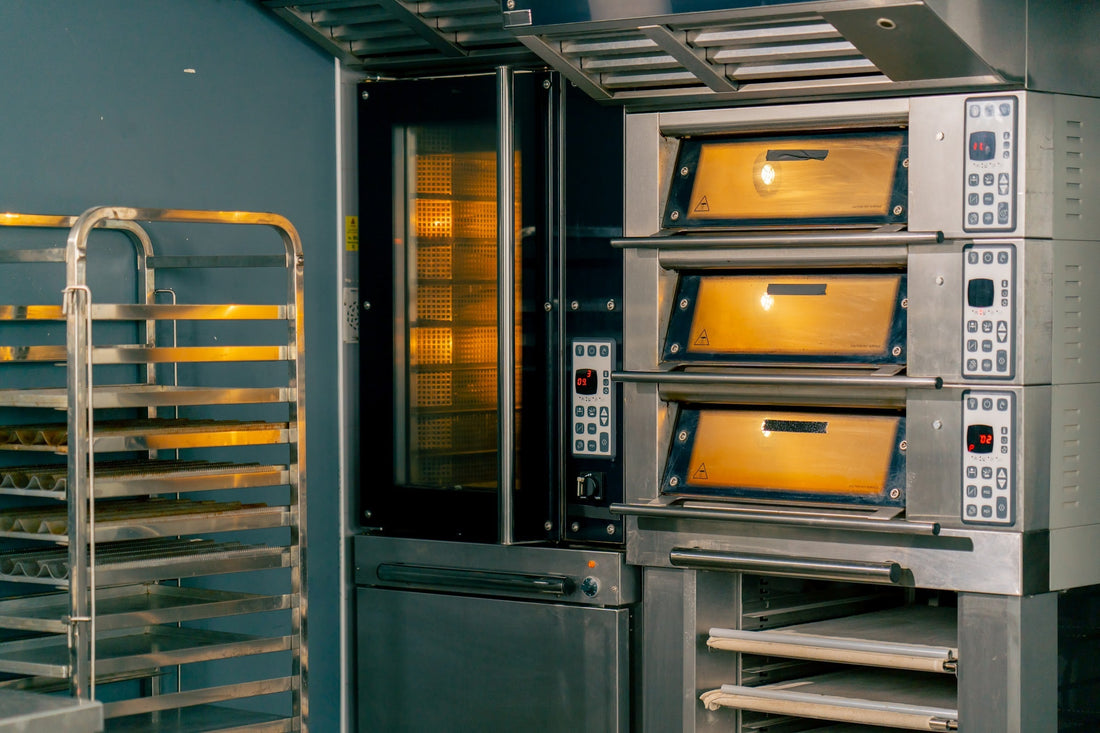
How to clean a professional oven: tools and maintenance tips
A professional oven is the operational heart of any well-equipped kitchen—an important investment that, if properly maintained, can ensure high performance and consistency in daily operations. However, for this investment to truly prove worthwhile over time, it’s essential to care for it with regular cleaning and proper maintenance.
The latest models (such as the Naboo 5.0 oven) feature self-cleaning functions or are made with easy-to-sanitize materials, but they still require manual intervention. With daily use, grease, residue, and buildup can accumulate. If neglected, they may compromise the oven's efficiency, increase energy consumption, or even cause breakdowns in the worst cases.
As industry professionals, we know how frustrating it is to face an oven malfunction in the middle of service. That’s why prevention, through a few consistent and targeted actions, is always the best strategy.
Maintenance tasks to follow
Every professional oven requires regular maintenance to ensure consistent performance, safety, and hygiene. These tasks vary depending on usage frequency and intensity.
Here’s a practical and easy-to-follow overview:
✅ Daily Cleaning
At the end of each working day, it’s essential to carry out basic cleaning to prevent the buildup of dirt and residue:
- Removing cooking debris: In pizza ovens or bakery ovens, for example, it’s important to remove ashes, crumbs, and burnt flour daily to avoid affecting future baking quality.
- Cleaning external surfaces: Use soft cloths and stainless steel-specific products, paying special attention to controls, handles, and glass panels.
🔄 Weekly Cleaning
Once a week, schedule more thorough interventions:
- Clean the inner glass (only when the oven is cool) to prevent thermal shock and potential damage.
- Carefully clean racks and trays: In some cases, such as restaurant or pastry ovens where fatty or sugary foods are cooked, this step may even be needed daily.
- Deep-clean the cooking chamber using professional degreasers that are safe for food-contact surfaces.
🛠️ Periodic Maintenance
On a monthly basis, or according to the manufacturer’s guidelines, it’s important to carry out more technical checks:
Check and maintain seals: Damaged seals reduce insulation and increase energy consumption.
Gas ovens also require semi-annual or annual burner maintenance, depending on usage intensity. The burner must be cleaned thoroughly to remove combustion residue, which, if neglected, can compromise flame quality and reduce oven efficiency.
Which tools to use to clean a professional oven
To ensure effective and safe cleaning of a professional oven, you need the right tools, designed to remove grime without damaging the surfaces. In the kitchen, people often improvise with whatever is on hand, but for high-use ovens, more specialized tools are essential.
The most suitable tools include:
- Non-abrasive sponges and microfiber cloths, perfect for daily cleaning of interior and exterior surfaces since they don’t scratch or leave residue.
- Plastic or silicone scrapers, useful for removing light buildup or burnt-on residue without damaging internal coatings.
- Professional degreasers specifically formulated for food-use: tough on grease and grime, but gentle on surfaces.
- Spray bottles and applicators, useful for targeted product application, even in hard-to-reach areas.
- Professional steam cleaners: ideal for deep and periodic cleaning. High-temperature steam dissolves grease and residue effectively without harsh chemicals, reducing labor time while ensuring a high level of hygiene.
Always wear protective gloves and, when necessary, safety goggles during chemical cleaning. Also, ventilate the area well while using cleaning products.
When to replace your oven: signs of wear to watch out for
Even the best ovens eventually show signs of wear. With proper maintenance and correct usage, a professional oven can last for many years. However, there comes a point when repairs are no longer sufficient or economically viable compared to replacing the unit.
Here are the main warning signs to look for:
- Uneven cooking: If food comes out inconsistently cooked—even after checking probes and thermostats—the oven may have structural problems or damaged heating elements.
- Longer preheating times: If the oven takes much longer than usual to reach the set temperature, it’s consuming more energy and working less efficiently.
- Worn seals and heat loss: If the door doesn’t close properly, energy consumption increases and cooking quality suffers.
- Internal or external corrosion, cracks, damaged glass, or rusted components: Beyond being a visual issue, these problems can become safety hazards.
If you’re considering replacing your oven, don’t wait until it becomes an emergency. Choosing a new model can help you optimize energy use, improve cooking quality, and simplify daily work.
At Bakeit, you’ll find a wide selection of next-generation professional ovens designed to meet the specific needs of restaurants, pizzerias, pastry shops, and bakeries.
Contact us for personalized advice: we’ll help you find the best solution for your business.